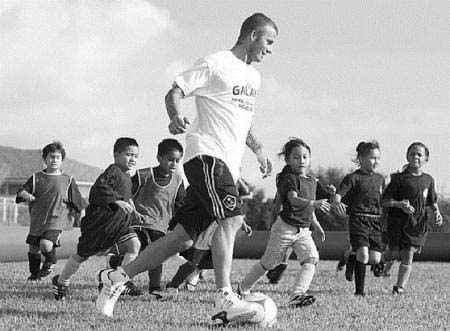|
Get the ball rolling in grade school
Gym class is an important element of your children's education, providing skills and motivation to keep them active now - and when they are grown up
Jill Barker, Special to the Gazette
Published: Tuesday, September 02, 2008
Do you know what your child is doing in gym class? If you don't, it's time to ask. Dodge ball (the kind you played as a kid) is out. So are other elimination games where kids are relegated to watching rather than playing. Today's physical education should promote inclusion, where all kids participate vs. activities where the less skilled are forced to sit out.
That doesn't mean that throwing a ball or two into a gym full of kids with instructions to "have fun" is the way to go, either. Gym class shouldn't look like a schoolyard game of pick up. What it should look like is a dynamic place of learning and play where every child is busy with a task that, depending on their age, teaches or reinforces specific skills, sports or fitness activities. In fact, the only difference between what goes on in a classroom and a gym is that the students are learning movement skills - not math or English.
Why should you care what happens in gym class? Though not officially part of the three Rs, physical education is a vital part of your child's education. This is the place where children learn how to throw, catch, skip, jump and roll. It's also the place where they learn the skills needed for a variety of sports and fitness activities.
 |
Soccer star David Beckham joins a game at a school in Hawaii: giving all kids a chance to be part of the action, regardless of their abilities, should be a priority in every gym class.
REUTERS |
Failure to grasp these skills can make it difficult for Johnny to fit in with his peers. Consider the consequences when Johnny continually drops the ball during a game of baseball at summer camp or when he struggles to skip rope during a school-wide Jump Rope for Heart event.
Fast forward another couple of decades and Johnny is still dropping balls only this time during a softball game at a company picnic. He also struggles on the golf course and squash court, all games that he'd love to play if only he had mastered the basics.
In fact, Johnny the adult now struggles with his weight as he never got the hang of being active.
Elementary school is the place to learn basic movement and sports skills. Additional refinement of those skills continues in high school coupled with exposure to other types of physical activity, including fitness and non-traditional and individual sports.
But it's not just the curriculum that needs to be followed in gym class. It's no longer acceptable for kids to sit on the sidelines waiting to be subbed into a game. Nor is it right for a child to play several minutes without touching the ball or to stand in line waiting their turn to dribble through a set of cones. And - we can all relate to this - it's not right for team captains to pick from among their classmates when choosing a team.
Physical education has evolved since the days when the jocks ruled the gym. Nowadays, physical educators are taught the importance of making gym class a positive experience, even for those who aren't gifted with natural athletic talent. They do this by running several games or skills stations concurrently, working on smaller courts with fewer kids on each team or group - allowing everyone plenty of opportunity to touch the ball, practise skills and be part of the action.
Teachers should also promote physical activity as fun, not punishment. Push-ups should be done as part of a fitness circuit not as a consequence of dropping the ball. Nor should the losing team always be the one to put away the sports equipment.
How do you make sure this is the kind of gym class your child is getting? Ask questions. Talk to your kids and ask them what they do in gym and if they are having a good time. If you don't like what you hear, talk to the physical education teacher - that is if your child has one. According to the Canadian Fitness and Lifestyle Research Institute, only 46 per cent of Canadian schools exclusively hire university-educated physical education specialists to teach physical education. The rest fall somewhere between having some or none of their physical education classes taught by professionals.
While you're at it, find out just how many minutes your child spends being active. In Quebec, some of the mandatory 120 minutes of health and physical education per week is spent in the classroom learning about nutrition and other health related topics, so ask the teacher how much actual physical activity your child gets during their weekly gym period.
It's also worth discussing how those minutes are divided up into the school week. The Canadian Association for Health, Physical Education, Recreation and Dance (CAHPERD) has long advocated the importance of daily physical activity, which means offering kids the opportunity to be active every day; a habit that is best instilled at a young age. Too often children are offered one or two long periods of gym a week, which doesn't promote the recommendation by health experts that children be active for 90 minutes most if not all days of the week.
Promoting an active lifestyle that carries over to a lifetime love of physical activity starts in the school gym, so don't be shy to ask what your school is doing to teach the joys of exercise to your child.
[email protected]
© The Gazette (Montreal) 2008
|


